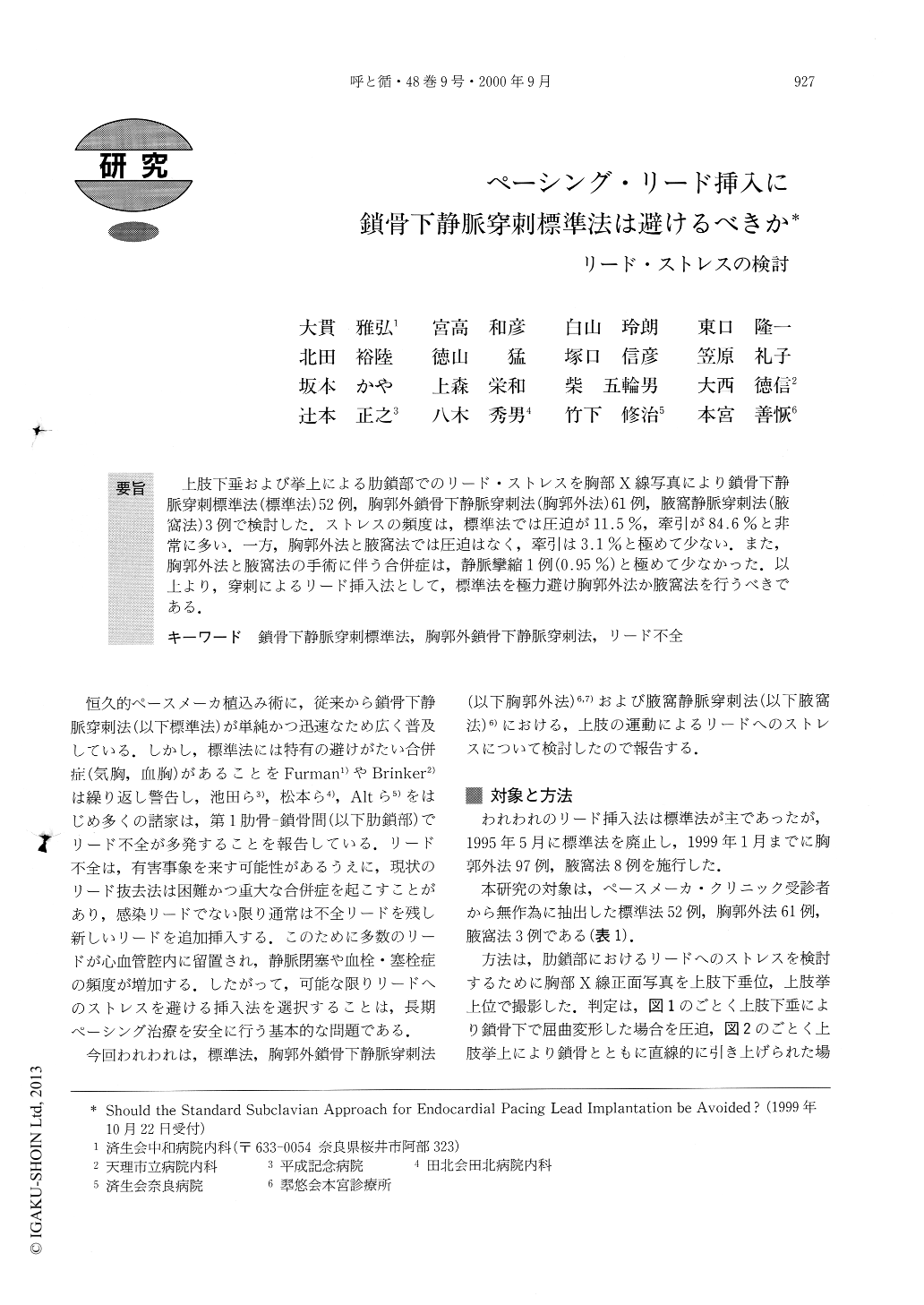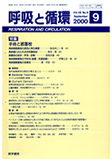Japanese
English
- 有料閲覧
- Abstract 文献概要
- 1ページ目 Look Inside
上肢下垂および挙上による肋鎖部でのリード・ストレスを胸部X線写真により鎖骨下静脈穿刺標準法(標準法)52例,胸郭外鎖骨下静脈穿刺法(胸郭外法)61例,腋窩静脈穿刺法(腋窩法)3例で検討した.ストレスの頻度は,標準法では圧迫が11.5%,牽引が84.6%と非常に多い.一方,胸郭外法と腋窩法では圧迫はなく,牽引は3.1%と極めて少ない.また,胸郭外法と腋窩法の手術に伴う合併症は,静脈攣縮1例(0.95%)と極めて少なかった.以上より,穿刺によるリード挿入法として,標準法を極力避け胸郭外法か腋窩法を行うべきである.
We reviewed our experience in 116 patients whounderwent implantation of endocardial pacing leads, todetermine the incidence of stress imposed by the sub-clavian soft tissues (costoclavicular ligament and sub-clavius muscle) as they respond to movements of theupper extremity. Chest X rays have shown two types ofstress, compression with depression of the clavicle andtraction with elevation of the clavicle. In 52 patients ofstandard subclavian venipuncture, compression has oc-cured in 6 patients (11.5 %) and traction in 44 patients(86.4%). In 61 patients of extrathoracic subclavianvenipuncture and 3 patients of axillary venipuncture, nocompression has occured in 64 patients and traction hasoccurred in 2 patients (3.1%). In 97 patients of extra-thoracic subclavian venipuncture and 8 patients of axil-lary venipuncture, there has been only one venoconstric-tion for an overall complication rate of 0.95%.
In summary, our data suggests that endocardial pac-ing leads should be placed by using the extrathoracicapproach and probably not be placed by the standardapproach.

Copyright © 2000, Igaku-Shoin Ltd. All rights reserved.


